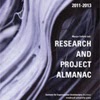ARCHITECTURE 13 MAY 2013
ROBOTIC FOAMING - MARJAN COLLETTI & REX-LAB
Το REX-lab / Εργαστήριο Ρομποτικού Πειραματισμού στο Πανεπιστήμιο του Innsbruck, με επικεφαλής τον αρχιτέκτονα και ακαδημαϊκό Marjan Colletti, συμμετείχε μαζί με τους Alisson Wieller, Georg Grasser και Kadri Tamre, στο πρόσφατο συνέδριο Smart Geometry 2013 – Constructing for Uncertainty το οποίο έλαβε χώρα στο Λονδίνο τον Μάρτιο.
Το Robotic FOAMing εισαγάγει και διερεύνα μια προσέγγιση που συνδυάζει την ρομποτική κατασκευή με 6-άξονικα ρομπότ ABB σε σχέση με τις υλικές ιδιότητες του αφρού πολυουρεθάνης.
Συγκεκριμένα,
ο αφρός πολυουρεθάνης υποστηριζόμενος από νηματοειδείς δομές, διερευνά
την ρομποτική ως μεθοδολογία για μια μη-γραμμική διαδικασία κατασκευής, η
οποία λειτούργει με έναν καινοτόμο τρόπο μεταξύ των παραδοσιακών
μεθόδων ψηφιακής μοντελοποίησης και κατασκευής.
Οι
ακριβέστατα ελεγχόμενες ρομποτικές μέθοδοι κατασκευής, μεταθέτουν τον
τομέα του φυσικού πειραματισμού σε πραγματικό χρόνο. Η εξαιρετικά
ακριβής φύση των ρομποτικών συστημάτων, έρχεται σε αντίθεση με τις
«χαλαρές» και απρόβλεπτες ιδιότητες του μαλακού νηματοειδούς υλικού.
Μέσω
αυτής της διαδικασίας, ένα φάσμα μεταβάσεων της υλικότητας, το οποίο
περιλαμβάνει την ελαστικότητα, πυκνότητα, στατικότητα, ακαμψία και την
πλαστικότητα εξετάζει προηγούμενες υποθέσεις του ομοιογενούς υλικού .
Παράλληλα η έρευνα αυτή εξετάζει τα μέσα με τα οποία εξελίσσεται η
ρομποτική κατασκευή εκμεταλλευομένη ένα «μαλακό» υλικό μέσω της
μη-γραμμική εκτέλεσης, και τη μετατροπή του από την ομοιογενή κατάσταση
στην ετερογενή.
The REX-lab Robotic
Experimentation Laboratory at the University of Innsbruck led by
architect and academic Marjan Colletti held a cluster, along with
Alisson Wieller, Georg Grasser and Kadri Tamre, at the recent Smart
Geometry Conference – Constructing for Uncertainty, which took place in London during March.
Robotic
FOAMing was introducing and investigating a synergetic approach on
robotic fabrication through 6-axis ABB robots combined with the material
properties of polyurethane foam. Particularly, Self supporting
filamentous foam structures, explore robotics as a design interface for a
non-linear fabrication process, operating in a new way between
traditional representation, digital modeling and fabrication.
By
utilizing precisely controlled methods of robotic fabrication, the
cluster attempts to expand the field of physical experimentation in
real-time. This potential was explored through research and
experimentation integrating the highly precise nature of robotic
systems, with the loose, unpredictable properties of expandable 'soft'
filamentous materials. Through robotic-controlled fabrication,
lightweight composite materials were quickly and efficiently configured
into porous and filamentous structures with a variety of properties.
Through this process, a spectrum of material transitions including
elasticity, density, structural fitness, rigidity and plasticity can be
explored in a previously assumed homogenous material. This research will
examine the means by which this evolving realm of robotic fabrication
can exploit a 'soft' material through non-linear execution, phase change
in material through time-based manipulation, and the transformation
from the homogenous to the heterogenous.
Robotic FOAMing - Detail
Robotic FOAMing - Detail
Robotic FOAMing - Fighting Robots
Robotic FOAMing - Fighting Robots
Robotic FOAMing - The process
Robotic FOAMing - Detail
Robotic FOAMing - Detail
Robotic FOAMing - The process
Robotic FOAMing - The process
Robotic FOAMing - The process
Robotic FOAMing - Video
Source:
exparch

























































